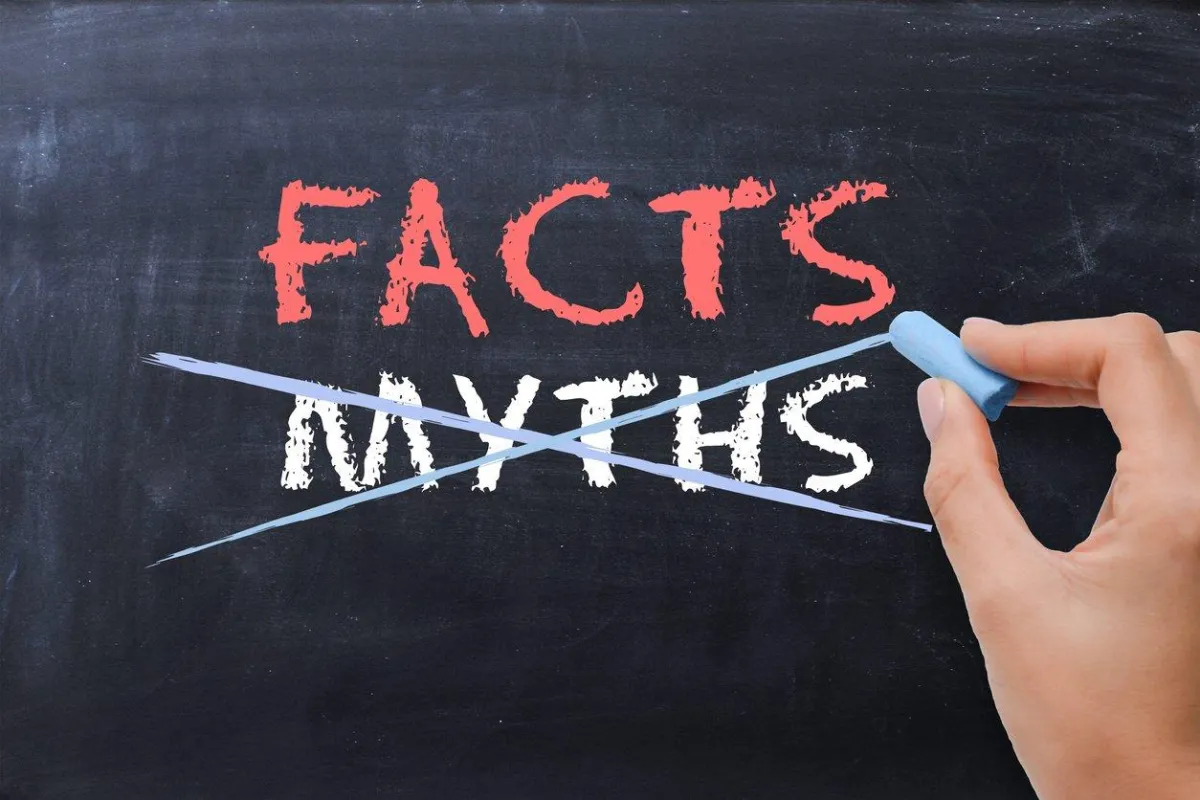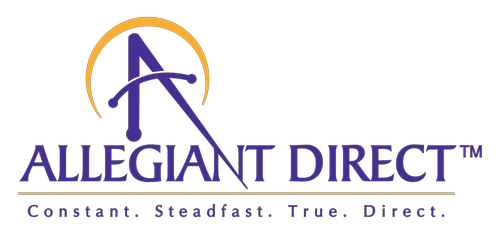The Allegiant Direct Blogs

The deadly dazzle of digital
By Wayne Gurley
President & Creative Director
Some “experts" say you should stop using direct mail altogether and convert all fundraising to email and other digital channels.
A few organizations have stopped using direct mail for acquisition and are acquiring new donors solely via email every month. They say, "it's cheaper and more timely." I agree you can get an email out quickly, and it's also cheap.
But it is more productive?
Do you get a better response?
Does email excel at doing what postal mail does?
For some organizations, the answers to these questions may be “yes.” But for many others - and I might say MOST others - the answers are "NO."
Here are some important facts to consider before you abandon direct mail completely...

Survey says…
In a recent post by Roger Craver at "The Agitator" ("Update on the Cost of Embalming An Elephant)," he harkens to an earlier post called "Missing Out: Smaller Organizations and Direct Mail."
Craver concludes that...
Smaller organizations are not taking advantage of the power of postal mail, and...
20% of respondents felt that most organizations are unaware of the difference in response rates between digital and postal mail.
The reasons?
“Too expensive.”
“Management believes we can do it all online.”
“Too much hassle with the logistics of printing and mailing”
“Don’t have time.”
“Don’t know enough about how to use direct mail.”
The power of postal mail
Craver goes on to say that according to the latest Direct Marketing Association (DMA) study...
"...average response rates from direct mail at 4.4% are a whopping 37 times higher than average email marketing rates at a mere 0.12%. Other studies show the same disparity, although open, click-thru, and response rates vary slightly."
One of these studies is the 2021 M+R Benchmarks Report which puts the national average email response at 0.29% from donors and 0.05% from prospects.
This compares unfavorably to what we see from the postal response in healthcare philanthropy, which is 5% - 15% AND OFTEN HIGHER from donors, and anywhere from 0.5% - 2% OR MORE from prospects.
Craver provides his own explanation of the economics of email vs. postal mail…
"If an email to donors has, on average, a 20% chance of being opened and a postal mail letter a 50% chance…and if the response rates average about 0.05% for an email while a printed letter delivered to the donor’s home enjoys a 4% response rate…that’s quite a difference in results.
"Assume the average gift for both channels is $30. An email to 1,000 donors, assuming no cost, but a 0.5 percent response rate will produce $150 from those thousand donors.
"The direct mail letter, assuming it costs $750 to reach those 1,000 donors with a response rate of 4%, will produce a total of $1,200 minus the $750 cost of the mailing for a net income of $450.
"For a group with 10,000 donors, that’s a $2,000 difference in favor of postal mail. It seems obvious to me which channel is preferable."
What the real experts say…
Several fundraising consultants and direct mail practitioners from both the U.S. and U.K. weighed in on "The Agitator" survey. Below are some condensed comments.
From consultant Pamela Grow…
"One of my subscribers wrote recently to say they’d dropped direct mail three years ago and gone solely digital. The result? They lost 2/3 of their donor base."
From Ken Burnett, a U.K. fundraising consultant…
"Roger, while undoubtedly alarming, everything you say resonates with what we see over here in the U.K., too. The dazzle of digital seems to have blinded fundraisers to the workhorse of their trade."
From someone wanting to remain anonymous…
"Direct mail is being systematically choked-off by a combination of rumor/opinion (NOT FACTS) that goes like this: 'It’s too expensive (hmmm…maybe if you are producing a 4-color piece on 100 lb. stock); cumbersome (too much lead time required); email is easier and cheaper; no one reads or responds to DM anymore (um, especially if you don’t send it!); everyone does everything online nowadays;' and don’t get me started on the ridiculous millennial argument.
“To make matters even worse, we have painted ourselves into a corner by deciding that since DM is 'so expensive, we will only send it to our top prospects (LYBUNTS, SYBUNTS) and cast everyone else into the email pool. Thus, we have an ever-larger swath of our file that hasn’t had a piece of DM from us in over TWO YEARS;
"Lost in all this is any focus, AT ALL, on the message and the ask. They have become secondary to the delivery system. Suffice it to say we never measure response rates; no one ever asks (!)
“…Our focus is almost EXCLUSIVELY on major gift fundraising, and we’ve had some success. It’s just not dawning on anyone that we aren’t building the pipeline anymore. We are systematically drying it up."
The final word.
Don't misunderstand - there's nothing wrong with email if used properly and as one of the many tools in your fundraising toolbox.
It's also true some people don't respond to email, while others don't respond to direct mail. The trick is providing opportunities for everyone to choose their own giving channel.
That's why I have no problem sending the same ask through multiple channels and letting the donor decide how they want to respond.
I like using email as an alert to a letter arriving at a donor's mailbox, then again as a follow-up - or sending an email with the same ask at the same time you mail a letter.
Email is very effective when used at the end of the calendar year around December 29-31. Response during other times of the year is not as strong.
Very often an offline message is why someone makes an online gift. So they work well together.
The problem I have is when an organization totally abandons a technique that's been used successfully for decades and replaces it with a less effective, anemic technique.
How can we help?
For more info on how Allegiant Direct, Inc., can help your organization improve its fundraising results, write Shannon Russell at: [email protected]
© 2021 Allegiant Direct, Inc.
Frequently asked questions
What kind of copy gets the best response for healthcare fundraising?
Mainly, copy that’s relevant, focused on the donor and non-institutional. Our experience is that it needs to be something related to heart or cancer and perhaps technology that does something better, keeps you out of the hospital and/or is less costly and less invasive. For children’s hospitals and hospices, patient stories usually work best, but appeals for new technology, equipment or programs can also work well.
Which is best - a window or closed face envelope?
We use both depending on the situation. A closed face envelope is a little more expensive. However, the #10 window envelope has been a workhorse for us for many decades. For hospital grateful patients, we think it may work because it approximates the look of a hospital bill. You can split test window vs. closed face, and sometimes you’ll find that a window does better, and sometimes a closed face works better. A closed face envelope has a more professionally looking business correspondence feel to it.
What about using a teaser on the outside envelope?
We usually come down on the side of not using teasers. The reason - if you put something on the envelope that gives the recipient an idea of what's inside, and they're not interested – like if they can tell it's a fundraising letter - then the trash can is always nearby. The problem with teasers is that most people who write teasers do not know how to tease properly. A teaser has to have some mystery to it. So, when you see it, you say, “What's this all about?” Having no teaser is its own mystery because you're wondering “why are these people writing me?” Then you want to find out and you open the envelope. We’ve used teasers in the past and tested them. Sometimes they work, and sometimes they don't. More often than not, they don't work. So, unless you've got a superb teaser, you may want to not use one at all.
Which lists work best for healthcare fundraising?
Most of our hospital clients solicit former patients, and they mostly work well. But if you’re a hospice, you have few numbers of bereaved individuals to solicit. By the same token, if you’re a children’s hospital, you have a minimum number of patients to contact. Parents of children’s hospital patients (the guarantors) are too young to be good philanthropic prospects. As a result, what we've found is that rented lists of donors to healthcare causes in your area often work better than patients. With hospices and children’s homes, you almost have no choice but to use rented names to build your donor base. Perhaps surprisingly, rented names tend to outperform hospital grateful patients. But why would a person who hasn't been in your hospital perform better than someone who has? With patients, we really only know two things about them. We know they're the correct age because we can select them based on age or date of birth from the patient record. We also know they've been in the hospital. But that’s it. We don't know anything else about them. But with a rented name, we know they're the right age because they've given to other nonprofit organizations. They’re definitely philanthropic. They’ve also given through the mail and are responsive to mail appeals. We also know they like to give, and particularly to healthcare causes. So that gives them an edge on former patients.
Book A Call
(FREE 30 minute consult)
To make your FREE consult appointment, select a date and click submit,
then you will be taken to a page to select the time. We look forward to chatting
with you! (If our calendar is not available, please refresh your page.)
Contact Us for More Information
For general inquiries or to receive additional information about our services, please write or call us.
Allegiant Direct, Inc.
278 Franklin Road, Suite 290
Brentwood, TN 37027
Still have questions?

Allegiant Direct, Inc.
278 Franklin Road, Suite 290
Brentwood, TN 37027
Marketing Systems Built By Be Known
We make no income or earnings claims - your results may vary.
We present testimonials and insights about other people’s experiences with our website for purposes of illustration only. The testimonials and examples used are of actual clients. They are not intended to represent or guarantee that current or future clients will achieve the same or similar results; rather, these testimonials represent what is possible for illustrative purposes only.
This site is not a part of the Google or Facebook website or Google/Facebook/Meta Inc. Additionally, this site is NOT endorsed by or affiliated with Google or Facebook in any way. GOOGLE and FACEBOOK are trademarks of GOOGLE, Inc. and FACEBOOK, Inc or Meta, Inc.


